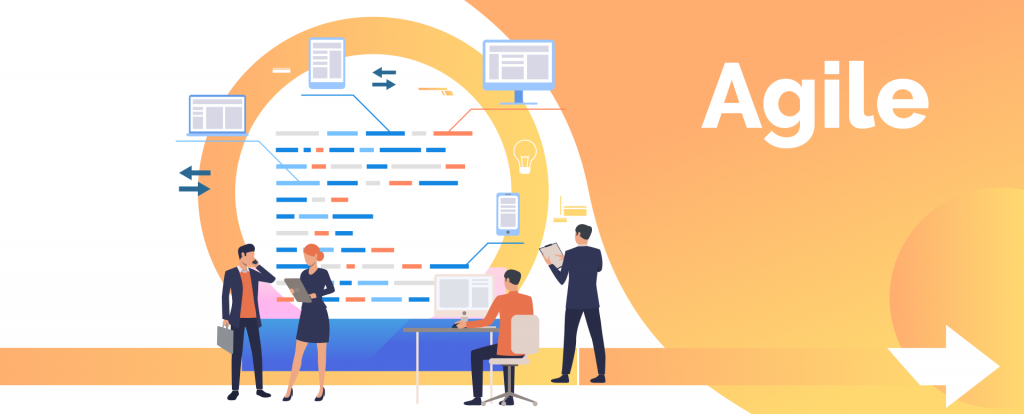Are you considering an outsourcing solution for your next software development project? You’re not alone — many are turning to this highly efficient, affordable, and productive system for building their next product or service.
But in your early research phase, sifting through the many options and understanding what you can get out of an outsourcing company can be tricky. Here, we’ve gathered some of the most important and frequently asked questions around outsourcing to help you make a more informed decision that best fits your company’s needs and covers those skills gaps to deliver the optimal outcome.
Common Questions for Software Outsourcing
Question #1: How do I protect intellectual property when outsourcing?

How to protect intellectual property when outsourcing
Protecting IP is a huge concern when outsourcing development, as you’re entrusting people to take valuable and sensitive information and turn it into a new product or service. Choose your outsourcing partner very carefully, ensuring that their data practices are up to code with your own.
For additional security, be sure to minimize access to your data and servers to a specific set of employees and vendors with which you feel comfortable.
Question #2: How to manage offshore development teams?

How to manage offshore development team
Working across time zones is tricky, but you can still achieve success by sticking to a clear set of predetermined milestones and closely monitoring the development budget. Use a strong product management tool to keep you fully aware of the various stages of production and keep the flow of communication between parties clear.
More importantly, consider using an agile system over a legacy waterfall model to maintain flexibility in your workflows and adjust better to issues with gaps in communication or missed deadlines.
Question #3: What is agile outsourcing?

What is agile outsourcing?
Agile outsourcing is a style of outsourcing software development that acts more fluidly than the previous waterfall system. Here, an agile team comes together to explain what they’re capable of building for a client, focusing on the overall need rather than a strict doctrine that doesn’t change. This is the more modern style compared to the “waterfall” methodology, which keeps specs static throughout the project and makes flexibility almost impossible.
Using agile outsourcing keeps the ensuing development process more fluid and focuses on longer-term deliverables rather than specific line-item deadlines.
Question #4: Can I outsource a CTO?

Outsource a CTO
Yes — and outsourcing companies can help you find the perfect fit! More and more, outsourcing companies are providing business services on top of development ones, helping organizations find the perfect leadership fit to guide their technical growth.
Whether looking for a temporary interim role or a long-term external solution, outsourced CTOs can bring a new level of expertise at a potentially lower cost than hiring locally.
Question #5: When should I choose onshore, nearshore, or offshore outsourcing?

When should you outsource a project?
The right outsourcing solution will depend on you and your company’s comfort level with time zones, cultural and language barriers, and partner of choice. Onshore outsourcing would be the most familiar, providing domestic team members largely within your timezone that work at the pace of other US-based businesses.
For nearshore and offshore outsourcing, the answer gets a bit more nuanced. Nearshore solutions — referring to LATAM for US-based companies — likely have fewer time barriers but will need to overcome differences in language and workplace culture. Offshore outsourcing — those that incorporate European and Asian staffing — have a strong and affordable pool of talent to work with, but are the trickiest with time differences that can be anywhere from 6 to 12 hours and beyond. All in all, a great partner will ensure you find the best possible fit no matter what, but it’s still worth considering these other logistic factors.
Question #6: Can outsourcing handle full-cycle software development?

Can outsourcing handle full-cycle software development?
Yes! Depending on which partner you work with, good outsourcing companies will be able to pull together the perfect set of resources to develop your project from conception through MVP to full launch, providing additional support and QA beyond that.
The considerations for full-cycle outsourcing really come down to time commitment and cost. For ongoing technical support and maintenance, you’ll have to develop a regular relationship with a great partner that understands your goals with your products/services and can ensure that the solution you settle on continues to deliver on that promise for your customers.
Question #7: How do you conduct your candidate evaluation process?

Candidate evaluation process
Every candidate evaluation and selection process is different with each outsourcing partner you might work with. At Urchin, we focus on skills gaps and capability needs first and foremost, bringing together international near- and offshore talent from LATAM and Eastern Europe that balance the development needs and have experience working in agile teams.
Within this, we make sure that we stay strictly on budget, and screen our talent to ensure they stick with our fast go-to-market guarantee for clients. Our goal is to always provide optimal technical performance that doesn’t take forever to get out the door — we want you to get the quality you need and we want you to get it at an efficient pace.
Get started with outsourcing your next big project

Your innovative software ideas are within reach — now’s the time to begin development. Reach out to Urchin Systems and let’s start building the state-of-the-art solutions you envisioned.

